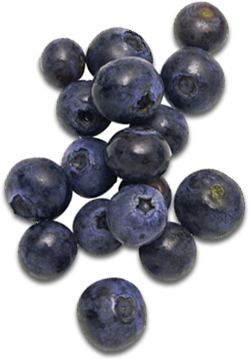no items to display
Three Fruits in Juice Plus+ You’ve Never Heard of, and Two More You Haven’t Tried
Look at the labels of Juice Plus+ capsules or chewables and chances are you recognize a lot of the ingredients: apples, beets, oranges, broccoli, cabbage, carrots, kale, spinach, tomatoes. You probably bring these fruits and vegetables home from the market on a regular basis. You may even have some of them growing in your backyard (or Tower Garden). But a few of the ingredients in Juice Plus+, particularly the fruits, are more unusual. In honor of National Fruits and Vegetables Month, why not try some new fantastic fruits? Here are a few you probably haven’t heard of:
1. Acerola cherries are not often seen on supermarket shelves, but if you live in the lower Rio Grande Valley in Texas or in the southern half of Florida where they grow, you may be lucky enough to find some at a farmers’ market. You may also find Acerola cherry jam in Caribbean markets. What’s special about these cherries is their amazing vitamin C content. A single fruit, one little cherry, provides 134 percent of the daily value (DV) for vitamin C! And a cup of acerola cherries contains 2,740 percent of the DV for this immune-supporting nutrient. You can mix acerola cherry jam with cream cheese and enjoy spread on whole grain toast or crackers.
2. Bilberries are a close relative of blueberries, but they are darker and tarter. They grow wild throughout much of Europe and are especially popular in Scandinavia, Ireland and Poland. Look out for them if you travel there! Bilberries are high in anthocyanins, a type of antioxidant that gives them — as well as other purple and blue fruits and vegetable such as blueberries, blackberries, red cabbage, and purple potatoes — their distinctive hue. Anthocyanins have been the focus of much research over the past decade, which shows they may support cardiovascular health, promote healthy cells and boost cognitive function.[1] Bilberries are traditionally made into jams or pies, or squeezed for their juice.
3. Elderberries grow in the warmer areas of Europe and North America. They are used to flavor yogurt, and to make cordials, marmalades, and pies. Elderberry syrup is a traditional remedy for upper respiratory challenges, and modern research confirms this use[2],[3]. Every one-cup serving also provides quite a bit of fiber (10 grams), as well as a hefty dose of vitamin C (87 percent of the DV). Elderberries are in season in the fall and pair well with other fall fruits, as in this apple-elderberry chutney recipe.
And here are two more fruits in Juice Plus+ capsules and chewables you’ve probably heard of, but may never have tried:
1. Black currants are native to central and Northern Europe, as well as Northern Asia. During World War II, when it was difficult for British civilians to get citrus fruits and other sources of vitamin C, the government encouraged the cultivation of this fruit, which provides 338 percent of the DV for vitamin C per one-cup serving. Black currants have been popular in the UK ever since then. The fruit is tart and is often made into preserves, juice, or desserts. But here’s something a little different: a recipe for a tomato salad with black currant sauce.
2. Pomegranates originated in the Middle East but now grow in much of the world. Each fruit contains up to 1,000 edible seeds covered in tart, ruby-red flesh. They are high in antioxidants and fiber and have been linked to cardiovascular health[4],[5],[6],[7]. Their juice is popular, but they are also delicious eaten fresh. My favorite way to eat them is in salads, such as this spinach pomegranate salad. For more ideas on how to use pomegranate, see my previous pomegranate fall/winter fruit feature blog post.
What is your favorite exotic or unusual fruit?
References:
[1] Webb D. Anthocyanins. Today’s Dietitian. March 2014. Vol 16, No 3, p. 20. http://www.todaysdietitian.com/newarchives/030314p20.shtml
[2] Zakay-Rones Z, et al. J Int Med Res. 2004 Mar-Apr;32(2):132-140.
[3] Barak V, Halperin T, Kalickman I. Eur Cytokine Netw. 2001 Apr-Jun;12(2):290-6.
[4] Aviram M, et al. Clin Nutr. 2004 Jun;23(3):423-33.
[5] Esmaillzadeh A, et al. J Med Food. 2004 Fall;7(3):305-8.
[6] Aviram M, et al. Am Clin J Nutr. 2000 May;71(5):1062-76.
[7] Aviram M, Dornfield L. Atherosclerosis. 2001 Sep;158(1):195-8.






